The Entomological Society of America (ESA) was founded in 1889 and today has more than 7,000 members, including educators, extension personnel, consultants, students, researchers, and scientists from agricultural departments, health agencies, private industries, colleges and universities, and state and federal governments. It serves the professional and scientific needs of entomologists and people in related disciplines. To facilitate communication among members, the ESA is divided into four sections based on entomological interests, and six branches, based on geographic proximity. The national office is located in Annapolis, Maryland.

The Rocky Mountain locust is an extinct species of grasshopper that ranged through the western half of the United States and some western portions of Canada with large numbers seen until the end of the 19th century. Sightings often placed their swarms in numbers far larger than any other locust species, with one famous sighting in 1875 estimated at 198,000 square miles (510,000 km2) in size, weighing 27.5 million tons and consisting of some 12.5 trillion insects, the greatest concentration of animals ever speculatively guessed, according to Guinness World Records.
Benjamin Dann Walsh was an English-born American entomologist who served as the first official state entomologist in Illinois. He was a leading influence during a time of significant transition in American entomology. Walsh championed the application of scientific methods to control agricultural pests. He was a proponent of biological control as an effective means to manage insects. He was also one of the first American scientists to support Charles Darwin's theory of evolution and was instrumental in securing its broad acceptance in the entomological community.

Cyrus Thomas was an American ethnologist and entomologist prominent in the late 19th century and noted for his studies of the natural history of the American West.

Alpheus Spring Packard Jr. LL.D. was an American entomologist and palaeontologist. He described over 500 new animal species – especially butterflies and moths – and was one of the founders of The American Naturalist.

Augustus Radcliffe Grote was a British entomologist who described over 1,000 species of butterflies and moths. He is best known for his work on North American Noctuidae. A number of species were named after him, including the moth Horama grotei.
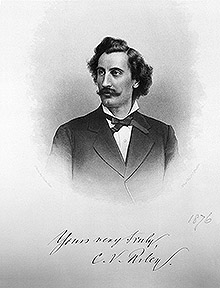
Charles Valentine Riley was a British-born American entomologist and artist. He was one of the first individuals to use biological pest control and authored over 2,400 publications. He convinced Congress to create the United States Entomological Commission and was among the founders of the American Association of Economic Entomologists.

Leland Ossian Howard was a pioneer American entomologist who worked in the US Department of Agriculture. Serving as the chief of the bureau of entomology, a successor to C.V. Riley, he helped establish economic entomology as a profession in the United States and strengthened research activities, helping establish laws to prevent the introduction of agricultural pests. He was a specialist on the Hymenopteran family Chalcididae, which are parasitic and contributed to the introduction of biological control agents for pest management. Howard also took an interest in medical entomology.
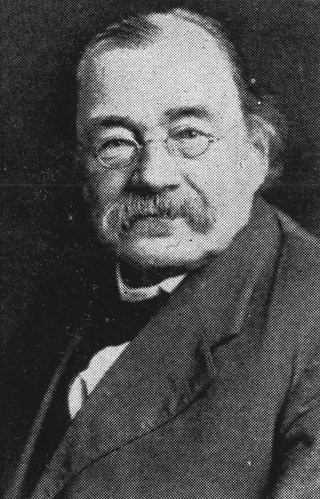
Eugene Amandus Schwarz was a German-American entomologist who specialized in the study of beetles (Coleoptera). He was a popular and influential employee of the U.S. Department of Agriculture for more than fifty years.
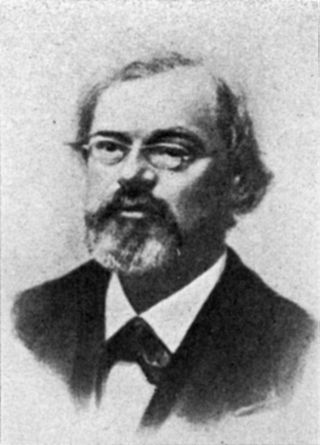
Townend Glover was an American entomologist, and the first such to hold a Federal office; he was followed by C. V. Riley. Glover was appointed to the Bureau of Agriculture of the United States Patent Office in 1854. He has been described as one of the "finest illustrators" of insects in the United States. Townend was born in Rio de Janeiro and lost both his parents at an early age. He was brought up by his relatives in England. In 1863 he was appointed as the United States Entomologist in newly formed Department of Agriculture. Townend did not care too much about collecting and preserving insects, instead spending time on illustrating them.
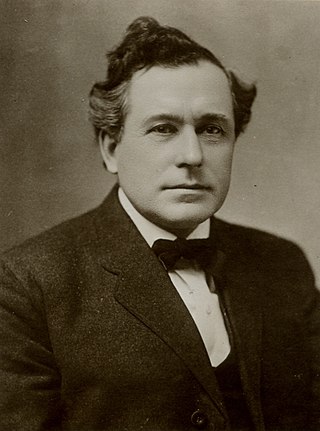
Andrew Delmar Hopkins was an American entomologist of the late 19th and early 20th centuries. Though self-taught, his scientific understanding of forest entomology was exceptional. He received an honorary doctorate from West Virginia University and in 1902 he went to work for the US Department of Agriculture. He was subsequently named head of the newly created Division of Forest Insect Investigations. He became a specialist in the bark beetle family Scolytidae, especially the genus Dendroctonus, species of which are the most destructive insects in coniferous forests of North America. His taxonomic monographs on these beetles are classics. He proposed the Law of Bioclimatics and he also developed the Hopkins Notes and Records System, a system he brought into the federal government when he first came to work for the Division of Entomology in the late 1890s. Hopkins’ research is one of the cornerstones of entomology on the North American continent and he is often referred to as the “father of North American forest entomology.”

William Saunders, CMG was a Canadian agriculturalist, entomologist and pharmacist. He was a pioneer in Canadian agricultural science, led the establishment of the Experimental Farm System and served as its first director for almost 25 years.
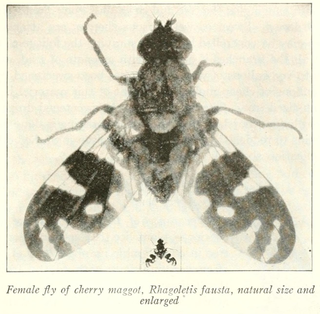
Rhagoletis fausta, the black-bodied cherry fruit fly, is a species of tephritid or fruit flies in the genus Rhagoletis of the family Tephritidae. It is found in the United States and Canada.

Charles Gordon Hewitt was a Canadian economic entomologist and pioneer of conservation biology. He was appointed dominion entomologist of Canada in 1909. He helped pass the Destructive Insect and Pest Act in 1910, and implemented significant changes in the Department of Agriculture. He published several books on the subjects of biology and entomology, and helped to further the 1916 treaty between Canada and the United States for the protection of migratory birds.

William Hampton Patton was an American entomologist.

Neoptychodes trilineatus is a species of flat-faced longhorn beetles in the subfamily Lamiinae.
Louise M. Russell (1905-2009) was a US Department of Agriculture entomologist renowned for her expertise in insect identification and research on using parasites for biocontrol.

Ampelomyia viticola, the grape tube gallmaker, is a species of gall midge found in the eastern United States and Canada. It produces green or bright red galls on new world grape vines.

K. Kunhikannan was a pioneer agricultural entomologist and the first Indian to serve as an entomologist in the state of Mysore. Aside from entomology related publications, he wrote two books The West (1927) and A Civilisation at Bay. He was a friend and admirer of the humanist Brajendra Nath Seal and the British writer Lionel Curtis who sought a single united world government. As an agricultural entomologist, he identified several low-cost techniques to pest management and was a pioneer of classical biological control approaches in India.

Otto Lugger was a Prussian-born American entomologist and botanist who served as the State Entomologist of the U.S. State of Minnesota.